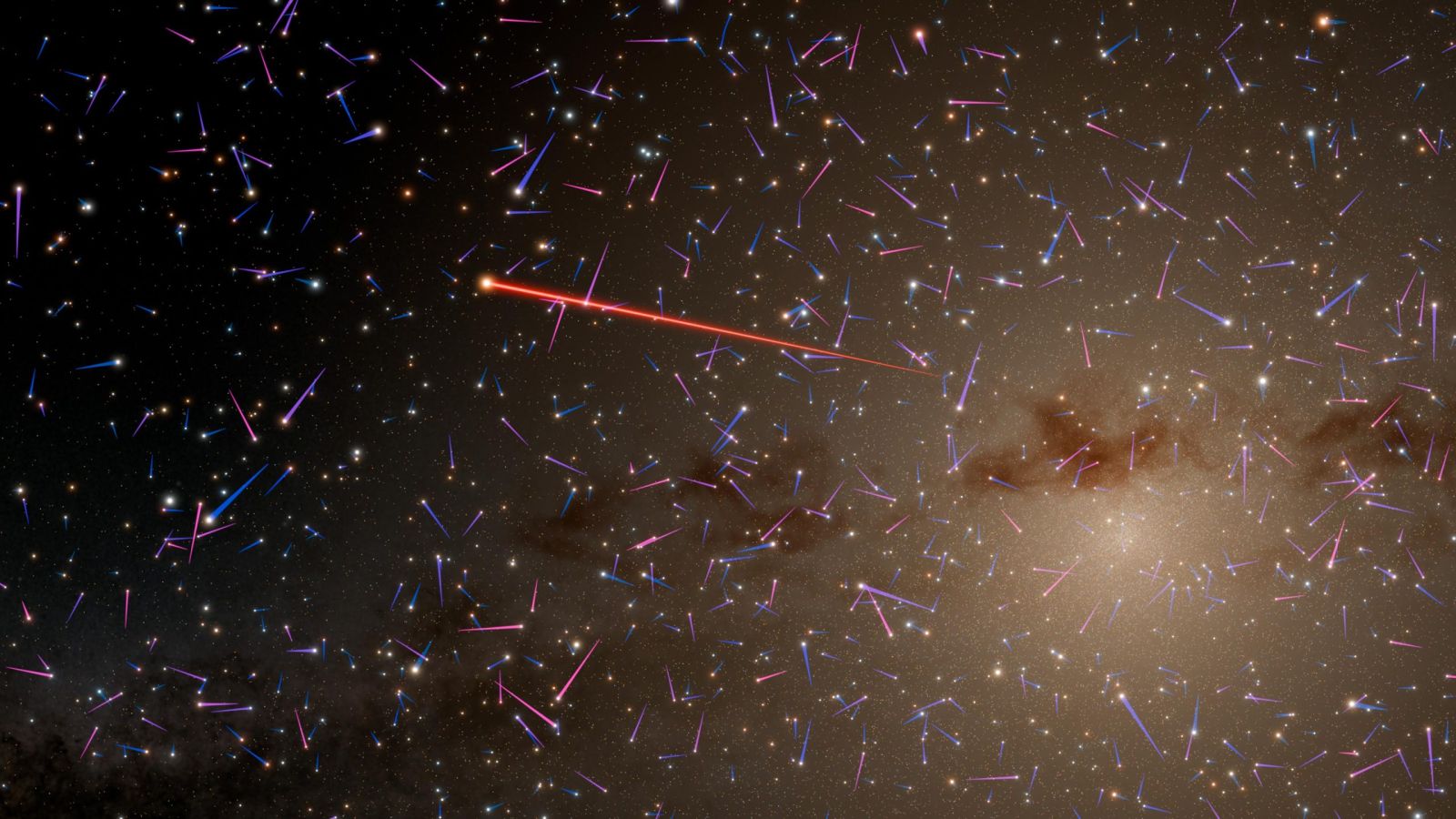A planetary system caught at record speed 🌠
Follow us on Google News (click on ☆)
Astronomers may have identified a star moving at an impressive speed, accompanied by a planet. This duo, moving at approximately 1.2 million miles per hour (2 million kilometers per hour), could be the fastest exoplanetary system ever observed. A gravitational microlensing observation technique made this discovery possible.

This artistic illustration depicts stars near the center of the Milky Way. Each star has a colored trail indicating its speed: the longer and redder the trail, the faster the star. NASA scientists recently identified a candidate for a particularly fast star, illustrated near the center of the image, with a planet in orbit. If confirmed, this system would set a speed record for a known system.
Credit: NASA/JPL-Caltech/R. Hurt (Caltech-IPAC).
Gravitational microlensing, a method based on the bending of light by massive objects, was crucial for this discovery. By observing how the light from a distant star is bent by a closer object, scientists can infer the presence of objects. This technique allowed the detection of this fast-moving system, located near the center of the Milky Way.
Researchers are considering two scenarios to explain their observation: a star accompanied by a planet, or a rogue planet with a moon. Future observations, particularly with the Nancy Grace Roman Space Telescope, should help determine which of these two hypotheses is correct.
The extreme speed of this system raises questions about its future. If its speed exceeds the Milky Way's escape velocity, it could one day leave our galaxy. This prospect opens discussions on the dynamics of exoplanetary systems and their evolution in intergalactic space.
Technological advancements, particularly with the Nancy Grace Roman Space Telescope, promise to revolutionize our understanding of exoplanets. By providing a broader and more precise view of the galaxy, this telescope will enable the discovery of numerous exoplanetary systems, including those moving at extreme speeds.
This discovery, published in The Astronomical Journal, marks an important milestone in the study of exoplanets. It highlights the importance of innovative observation techniques and international collaborations to push the boundaries of our knowledge of the Universe.
What is gravitational microlensing?
Gravitational microlensing is an astronomical phenomenon that occurs when a massive object, such as a star or planet, passes between an observer and a distant star. The gravity of the massive object warps spacetime, acting as a lens that amplifies the light from the distant star.
This technique allows the detection of objects that would otherwise be invisible, such as planets orbiting distant stars. It is particularly useful for discovering exoplanets in remote regions of the galaxy, where traditional detection methods are less effective.
Gravitational microlensing was predicted by Einstein's theory of general relativity and was first observed in the 1990s. Since then, it has become an essential tool for astronomers studying exoplanets and the structure of the Milky Way.
Microlensing observations require international coordination and telescopes distributed around the globe to capture these rare and fleeting events. This has enabled major discoveries, such as the fast-moving exoplanetary system described in this article.
How can planets reach such high speeds?
Planets and stars can reach extremely high speeds through intense gravitational interactions. In the case of hypervelocity stars, these speeds are often the result of interactions with the supermassive black hole at the center of the galaxy.
When a star passes too close to the black hole, it can be ejected at high speed, taking its planets with it. This process, known as the Hills mechanism, can propel entire stellar systems at speeds sufficient to escape the galaxy's gravity.
Rogue planets, which are not bound to a star, can also reach high speeds. They are often ejected from their original stellar system during gravitational disturbances, such as close encounters with other stars or collisions.
These extreme speeds raise questions about the dynamics of exoplanetary systems and their evolution. Future observations, particularly with telescopes like the Nancy Grace Roman, will allow a better understanding of these phenomena and their frequency in the galaxy.